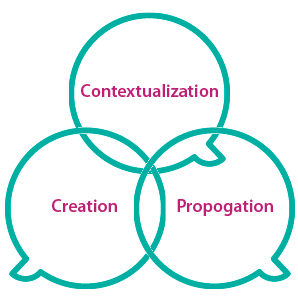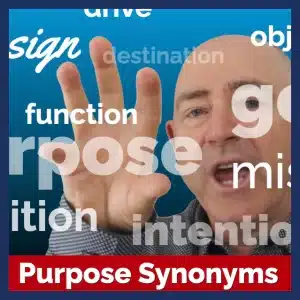
Creation
What’s motivating consumers to produce content? They’re becoming the new ‘mass media’ in terms of content production because: they can; they want their 15 blog posts of fame; it’s a way to make money; and for self-actualization – it’s being creative for creative sake.
There are 3 distinct Phases of Content Creation
- Initiating original content : not so common
- Extending existing content : more common
- Mashing up (recombining existing work to create a new derivative work) : this is becoming increasingly more common.
The key point of Content Creation is not you pushing out your marketing message. It’s the conversation between you and your customers.
Why spend millions building a brand and then when a consumer notices us we ignore them?
[Tweet “The key point of Content Creation is the conversation you create #content”]
Contextualization
To contextualize content is to change the frame of reference. In other words it’s a way to put fresh meaning on an existing idea. There are 3 distinct Phases of Content Contextualization:
- Commenting : Blogs without comments are not really blogs. Comments are the basic building block of conversation and the easiest way to join in. The key to comments it to entitle everyone to their opinion. Not everyone is going to like you. C’est la vie! Let your supporters promote and your critics complain.
- Trackbacking : Creates a visible trail, “the long trail”, all the way back to the beginning of a particular conversation, idea, rant or revelation. They honor the sources of original ideas.
- Tagging : Tagging labels content to make it searchable in new ways. If enough people use the same tag new trends and patterns emerge. This is a fluid and flexible way to compartmentalize your content into bite-size chunks.
[Tweet “The three phases of creating context for your content #content”]
Propagation
Once you’ve created your content, then you’ll want to disperse it. There are 3 distinct Phases of Content Propagation:
- Sharing : Sharing is a natural caring thing to do, when it’s not manipulated of course. Forcing the spread of your message is unnatural!
- Digging : Digg uses the wisdom of the crowd to group stories found on the web. If you ‘Digg it’ you’re voting your seal of approval. This is liberation. Instead of a news editor telling you what’s important, the crowd decides. Sure, it’s a popularity contest and so is democracy.
- Listing : A list is another simple way of combining or aggregating content. Blogs are full of lists because it builds links within your posts and to others. It’s another human lens through which to view content.
[Tweet “The three phases of content propogation and sharing #content”]
Source: This is from the Book Rapper issue Talk With Me which is derived from: Joseph Jaffe’s fabulous book Join the Conversation.



